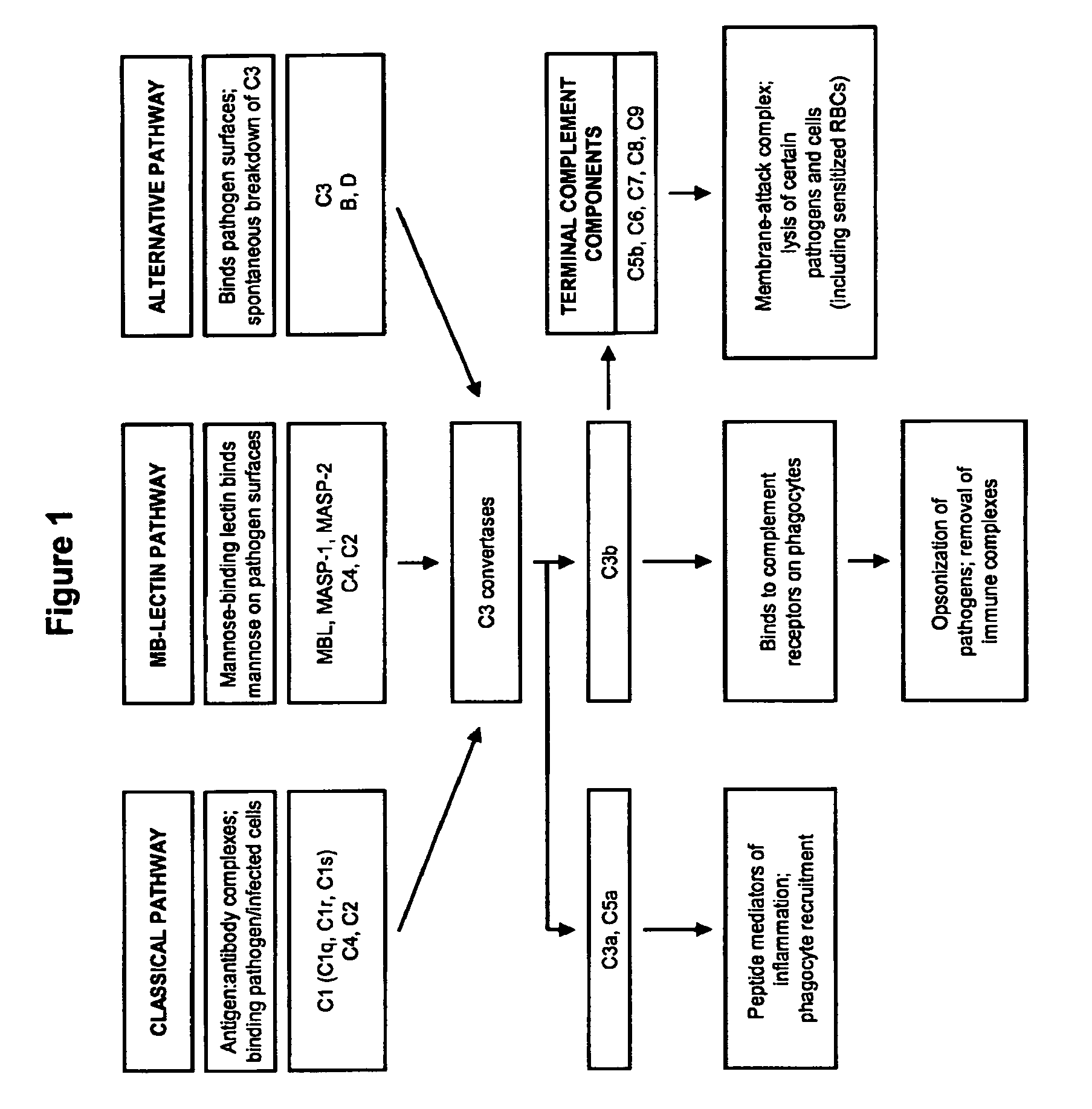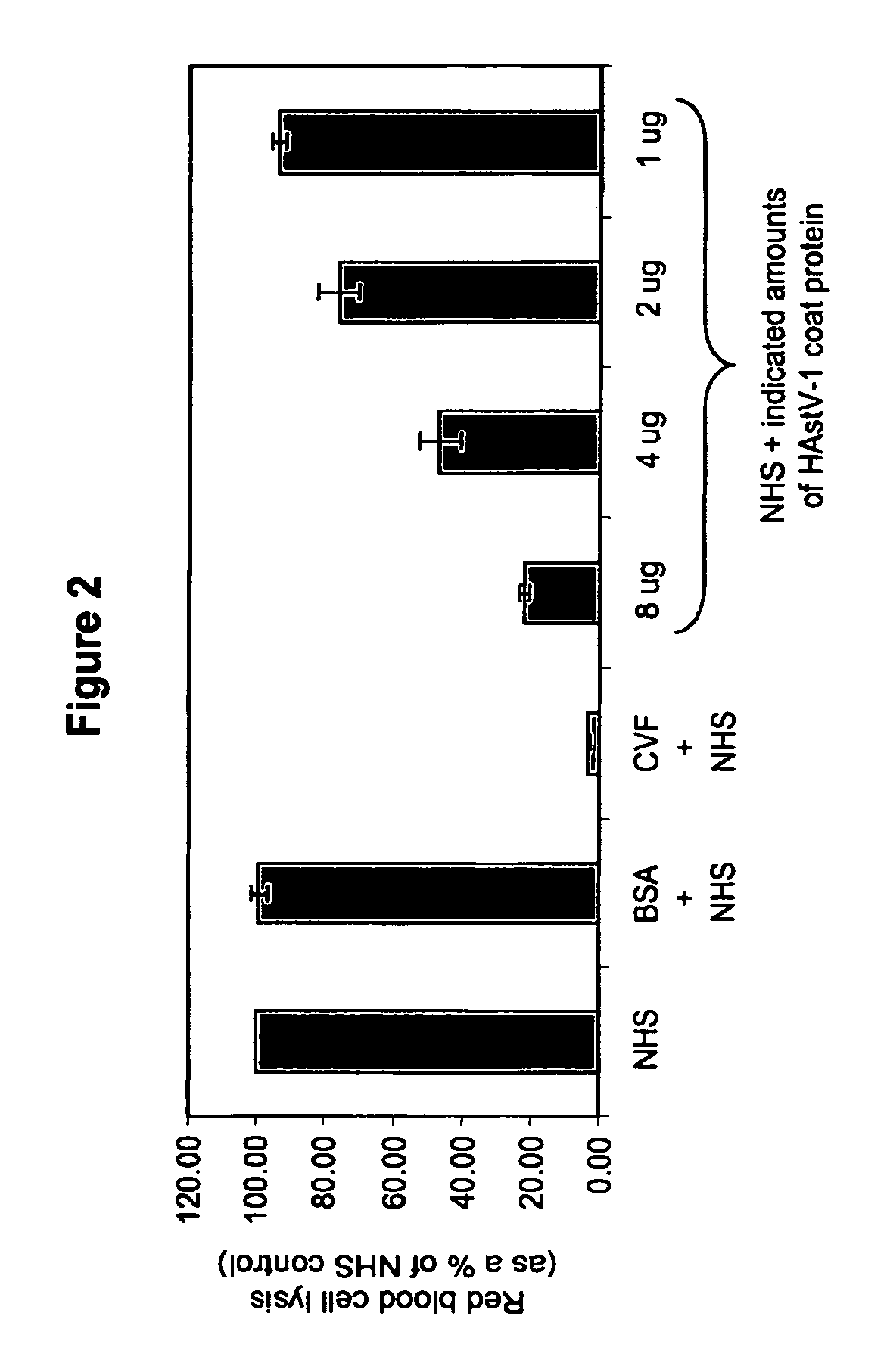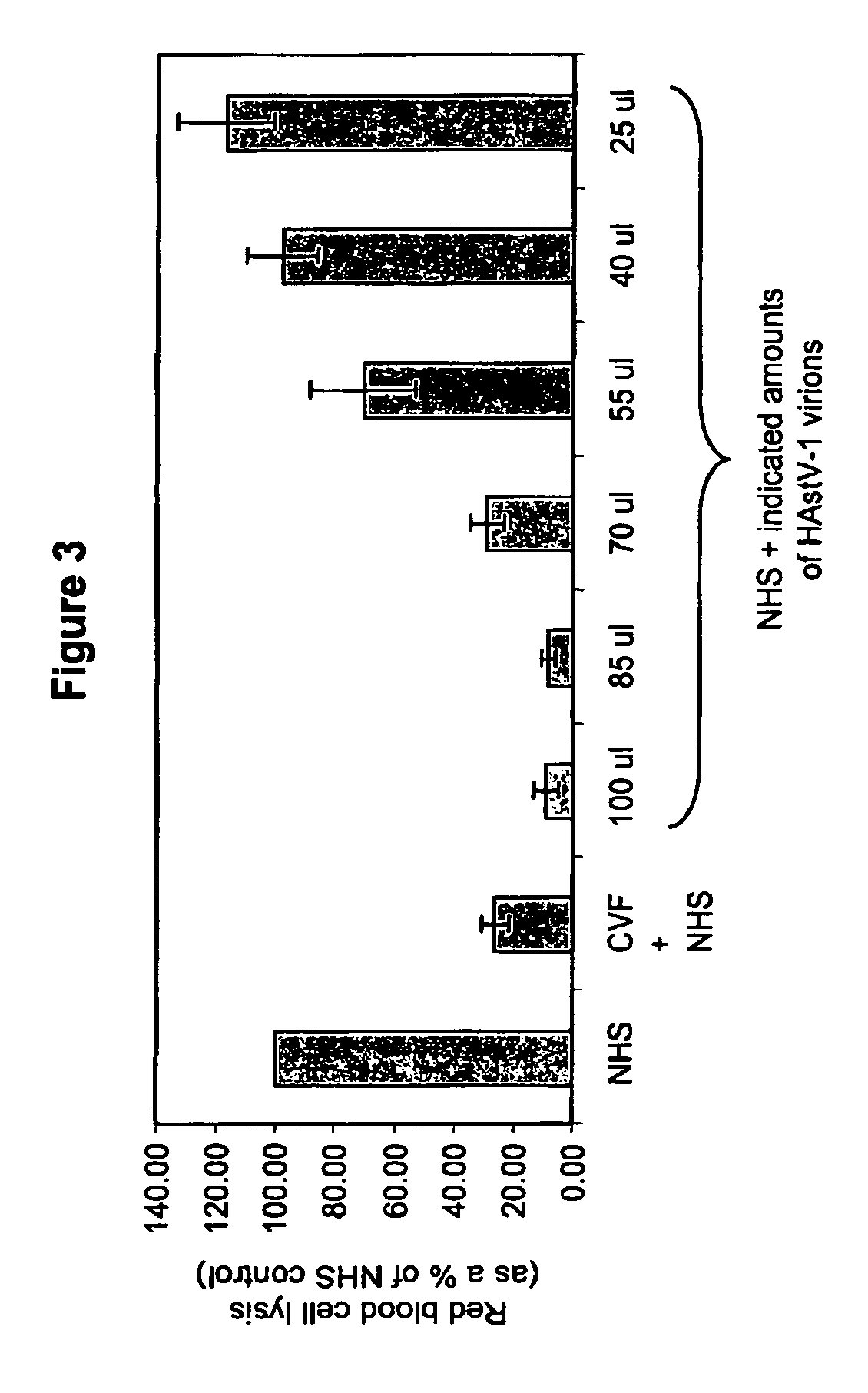Methods for regulating complement cascade proteins using astrovirus coat protein and derivatives thereof
a complement cascade protein and complement-related technology, applied in the field of complement-mediated tissue damage and viral illness, can solve the problems of astrovirus (hastv) causing a significant economic loss, astrovirus infection can be especially devastating for children with malnutrition, and the trend of economic loss is likely to worsen, so as to reduce the damage of complement-related tissu
- Summary
- Abstract
- Description
- Claims
- Application Information
AI Technical Summary
Benefits of technology
Problems solved by technology
Method used
Image
Examples
example 1
Cell Lines and Viruses
[0080]For baculovirus production of astrovirus coat protein, Spodoptera Frugiperda cells (line IPLB-Sf21) (Vaughn, J. L. et al., 1977. In vitro. 13, 213-217) were propagated in TC100 medium supplemented with 10% heat-inactivated FBS as described previously (Scheneemann, A. et al., 1993. J. Virol. 67, 2756-2763). Virus stocks of the recombinant baculoviruses encoding the wildtype HAstV-1 coat protein gene and deletion mutants were prepared by infecting Sf21 cells at a multiplicity of infection (MOI) of 1 in cell growth medium and allowing the infection to proceed for 5 to 7 days. Following the infection period, cell debris was removed in a low speed spin and virus contained in the medium was titered by plaque assay and stored at 4° C.
[0081]For propagation of infectious astrovirus particles, CaCo-2 cells (J. Fogh and G. Trempe, 1975. New human tumor cell lines. In: Fogh J (ed) Human tumor cell lines in vitro. Plenum, New York, pp 115-159) were propagated in minim...
example 2
Real-Time Reverse Transcription PCR
[0082]To quantify HAstV stocks, a real-time PCR method was developed. To isolate total RNA, 40 μL of CaCo2 cells lysates infected with HAstV-1 were diluted 1:5 in 1× minimum essential medium. RNA was then extracted using Trizol (Invitrogen) per manufacturer's instructions. Following isolation, RNA was treated with DNAsel (Promega) for 30 min at 37° C. and the enzyme was then inactivated at 65° C. for 10 min. RNA was stored at −80° C.
[0083]One-step real-time RT-PCR was performed using the iCycler IQ™ system (Bio-Rad). The real-time RT-PCR reaction was assembled using the Superscript III Platinum Syber Green® 1-Step qRT-PCR kit (Invitrogen). Briefly, a reaction mixture was made, containing 12.5 μL 2× Syber® Green RT-PCR Reaction Mix, 0.5 μL each of 10 μM forward primer ORF1a-F1 and reverse primer ORF1a-R1 (targeting a conserved portion of the serine protease gene of the HAstVs, 200 nM final concentration), 0.5 μL iScript Reverse Transcriptase for One...
example 3
Construction of Recombinant Baculoviruses
[0084]Recombinant baculoviruses containing full-length (Ac—1-787) and deletion mutants (Ac—1-415 and Ac—416-787) of the HAstV-1 (Newcastle) coat protein gene were generated with the BacPAK baculovirus expression system kit (Clontech). To this end, the DNA fragment encoding the cDNA of the coat protein (kindly provided by Dr. M. J. Carter, University of Surrey, England) (Willcocks, 1994) was amplified by PCR with Pfu polymerase (Stratagene) and primers harboring BamHI and XbaI restriction sites at the 5′ and 3′ end of the PCR product, respectively. Primers were designed to amplify the entire capsid gene coding region (aa 1-787) or the gene segments corresponding to aa 1-415 and aa 416-787. Each PCR product was then purified by agarose gel electrophoresis and the Gene clean II kit (Qbiogene), digested with BamHI and XbaI, and separately ligated into a BamHI / XbaI-digested transfer vector pBacPAK9. Following transformation of JM109 competent cell...
PUM
| Property | Measurement | Unit |
|---|---|---|
| molecular weight | aaaaa | aaaaa |
| mass | aaaaa | aaaaa |
| mass | aaaaa | aaaaa |
Abstract
Description
Claims
Application Information
 Login to View More
Login to View More - R&D
- Intellectual Property
- Life Sciences
- Materials
- Tech Scout
- Unparalleled Data Quality
- Higher Quality Content
- 60% Fewer Hallucinations
Browse by: Latest US Patents, China's latest patents, Technical Efficacy Thesaurus, Application Domain, Technology Topic, Popular Technical Reports.
© 2025 PatSnap. All rights reserved.Legal|Privacy policy|Modern Slavery Act Transparency Statement|Sitemap|About US| Contact US: help@patsnap.com



